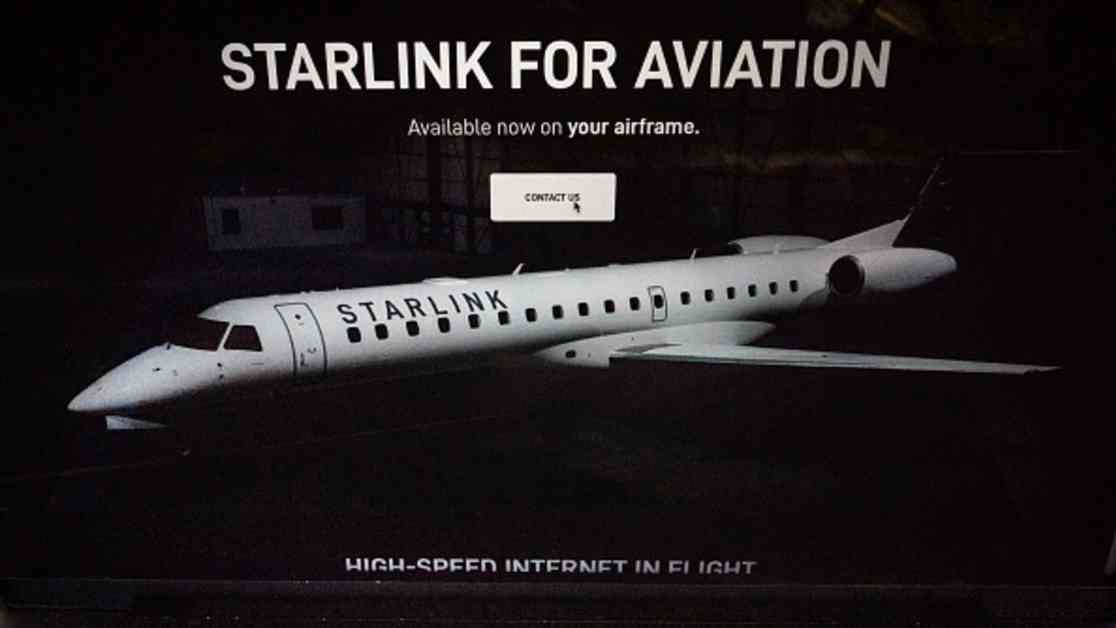SpaceX Starlink Revolutionizes In-Flight Wi-Fi Connectivity
SpaceX’s Starlink program has made significant strides in revolutionizing in-flight Wi-Fi connectivity with a recent megadeal with United Airlines. The company’s director of Starlink aviation sales and partnerships, Nick Galano, announced that SpaceX has secured contracts with approximately 2,500 aircraft, marking a major milestone in bringing high-speed internet to passengers worldwide. This deal with United Airlines represents Starlink’s largest in-flight connectivity agreement to date, showcasing the company’s rapid expansion in the aviation industry.
Expanding Starlink’s Reach in the Aviation Industry
In addition to the United Airlines deal, SpaceX has been actively pursuing partnerships with various airlines to equip their fleets with Starlink technology. Hawaiian Airlines, Qatar Airways, Japan’s Zipair, Latvia’s airBaltic, and semi-private charter airline JSX are among the carriers that have already begun utilizing Starlink’s in-flight Wi-Fi services. These partnerships highlight SpaceX’s commitment to providing reliable and high-speed internet connectivity to passengers across different regions.
Furthermore, SpaceX’s Starlink network has grown exponentially since its inception in 2020, with over 6,400 satellites currently in orbit connecting more than 3 million customers in 100 countries. The company’s focus on expanding its satellite constellation and enhancing its product offerings has positioned Starlink as a leading provider of satellite-based internet services in the aviation and maritime sectors.
Enhancing In-Flight Connectivity with Starlink Technology
One of the key advantages of Starlink’s in-flight Wi-Fi service is its unparalleled capacity, which far exceeds that of traditional satellite communication systems. Nick Galano emphasized the vast capabilities of Starlink, citing over 300 terabits per second worth of capacity available through the current satellite constellation. This immense capacity allows Starlink to deliver fast and reliable internet connectivity to aircraft, ensuring a seamless experience for passengers and airlines alike.
Moreover, SpaceX is dedicated to streamlining the installation process of Starlink antennas on aircraft to minimize downtime and disruption for airlines. By implementing innovative solutions and reducing installation times to under a day, SpaceX aims to make the retrofitting process more efficient and cost-effective for airlines. This approach contrasts with traditional retrofitting methods, which can be time-consuming and labor-intensive, causing aircraft to be out of service for extended periods.
Delta Air Lines, a key player in the aviation industry, has also recognized the importance of in-flight connectivity and is exploring ways to enhance its Wi-Fi services. With a fleet of 1,200 aircraft, Delta is working to improve its satellite IFC retrofits, which currently take an average of about three days. The airline’s commitment to providing free internet access to its members reflects a growing trend in the industry towards offering enhanced connectivity options to attract and retain high-end customers.
In conclusion, SpaceX’s Starlink program continues to redefine in-flight Wi-Fi connectivity with its innovative technology and strategic partnerships with leading airlines. The company’s recent megadeal with United Airlines underscores Starlink’s growing presence in the aviation industry, signaling a new era of high-speed internet access for passengers worldwide. As SpaceX expands its satellite network and product offerings, the future of in-flight connectivity looks brighter than ever, promising a seamless and enjoyable travel experience for all.






















